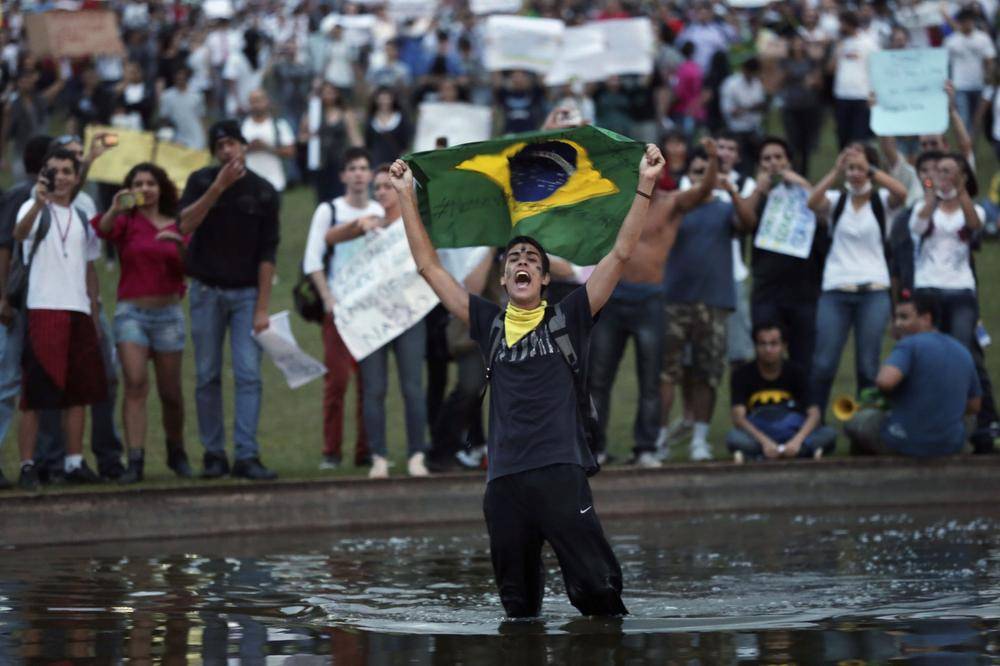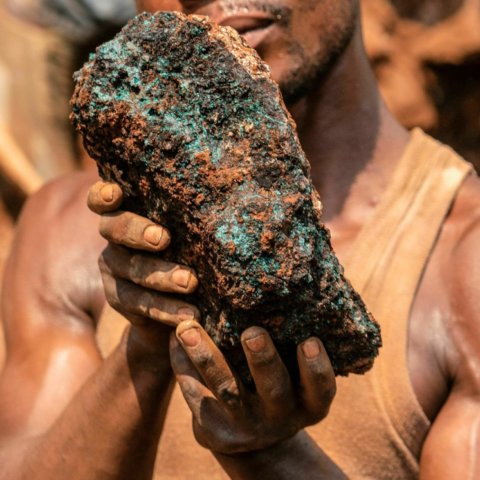By: Chris Lewitzke

Over the past 12 months, Brazil’s golden image of sunny beaches, beautiful people, and a prospering economy has faded away. Now, news stories mention Brazil in the context of protests, missed building deadlines, and slowed economic growth. For many Americans, these stories are their first exposure to the intricate and difficult problems that have faced Brazil for decades: economic “booms” that don’t translate to improved education and healthcare quality and a government that fails at listening to its countrymen.
Fifty years ago last month marked the beginning of a lesser known but extremely defining era in Brazil’s history. On March 31, 1964, Brazil came under military rule after a coup d’état forced out the previous government. For the next 21 years, this military dictatorship slowly stripped Brazilians of their rights and hastily imprisoned and tortured any government dissenters. Several guerilla groups quickly formed to fight against the oppressive regime, including COLINA, whose members included current Brazilian President Dilma Rousseff. In 1968, however, tensions between the dictatorship and anti-government groups rose to new levels and violence escalated. In March of that year, students in Rio de Janeiro began protesting the high price of food in a local university cafeteria. During one of the protests, military police shot 18-year-old student Edson Luís de Lima Souto in the chest at point-blank range, killing him immediately.  The government had made it clear it was unwilling to work with student demands and unwilling to prioritize their needs, such as better education and healthcare facilities, along with lower lunch prices. A popular slogan of the military regime during the 1960s was “Brasil: ame-o ou deixe-o,” which translates to “Brazil: Love it or Leave it.”
The government had made it clear it was unwilling to work with student demands and unwilling to prioritize their needs, such as better education and healthcare facilities, along with lower lunch prices. A popular slogan of the military regime during the 1960s was “Brasil: ame-o ou deixe-o,” which translates to “Brazil: Love it or Leave it.”
The opposition to the military government did not love what was happening to their country, but they certainly did not want to simply leave. They wanted to change Brazil for the better. So, on June 26, 1968, thousands of students, intellectuals, artists, and other unhappy Brazilians took to the streets of Rio to protest against the government and the death of Edson Luís in what became known as the March of the One Hundred Thousand.
Rather than listening to the desires of the protestors, who mostly hailed from the middle class, the government became even more entrenched in its policies. Dissidents of the regime continued to be arrested, tortured, and murdered. Some simply “disappeared.” (In 2011, Rousseff sanctioned the National Truth Commission to investigate crimes that had been covered up from 1964 to 1985, the years of the military regime.) In December 1968, President Artur da Costa e Silva issued Institutional Act Number 5, which forced the National Congress into recess, gave the national government the power to intervene under the guise of “national security,” and censored many works of music and art. Rousseff herself was incarcerated at the age of 23 from 1970 to 1972 and tortured for weeks at a time.
Over the next decade under the military dictatorship, Brazil’s economy actually fared quite well. The country’s GDP per capita increased by nearly 500 percent between 1968 and 1982. However, this growth wasn’t achieved at a natural, sustainable pace and didn’t benefit all Brazilians. The government increased spending on large projects such as the Transamazonian Highway; meanwhile, trade deficits increased and wealth became more concentrated in the upper class, a situation that continued to displease a majority of Brazilians.
Unrest from youth and the lower class grew over increased prices, a corrupt government that can’t stop spending on big projects, and sensational economic growth that never translated to better education or healthcare for a majority of Brazilians. Upon examining the past, it becomes clear that the issues that plague Brazil’s current government and led to widespread protests last summer have plagued the country before. As World Cup and Olympic spending has ballooned over budget for their respective 2014 and 2016 events, Brazilians continue to be unsatisfied with how the government is handling hosting what are supposed to be moments pronouncing Brazil’s entrance on to the world stage.
Rather than watching extravagant stadiums being built in Brasília and Manaus, which will probably be mostly empty after the World Cup because of small fan bases in both those cities, a majority of Brazilians would like to see the government pour money into urban schools and hospitals. They don’t need another underused Transamazonian Road. Rather than having construction contracts awarded in a corrupt manner, as has been the case with the building of the newest stadiums, they would like a see a government that is run transparently and fairly. They don’t need another Institutional Act Number 5. Rather than offsetting high spending by raising bus prices, the lower and middle classes would like to live comfortably without marginalization by the government. They don’t need another rise in university cafeteria prices.
At their cores, all of these issues have risen from the disparity between what Brazilians want and how the government acts. The Brazilian national government didn’t base its decisions on bettering the lives of all Brazilians in 1964, and it still doesn’t do so in 2014. Although current government officials should not be lumped together with the former military regime in terms of violence and torture, President Rousseff needs to think back to why she protested as a youth. She wanted a government that protected her and cared about her needs, even as a student attending an urban university.
With less than two months until the World Cup begins in June, Brazil’s government can’t change much about the way it has handled preparations for hosting the world’s largest sporting event. However, the country is still two years away from hosting the second largest sporting event, the Summer Olympics, in Rio. And how the country meets this event’s requirements, will have a significant impact on whether the government further alienates itself from many already frustrated Brazilians, or whether it begins to bridge that gap.
In October, Brazil will hold presidential elections for only the seventh time since 1960. Campaigns are already well under way, and if President Dilma Rousseff hopes to win re-election, she must address the growing disparity between how the government is acting and what the people desire. A successful government can’t simply ask its people to “Love it or Leave it;” a successful government instead asks its citizens how it can change the country for the better

